American ekranoplan. Big bummer
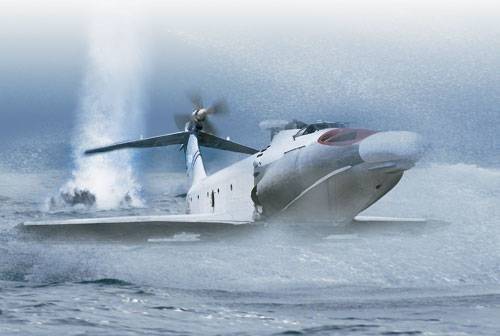
Some time ago, an article was published on the Military Review website about obvious problems and technical difficulties that arise when creating devices that use a screen effect. In the hot discussion that broke out, the name “Pelican”, an unfulfilled project of the Boeing corporation to create a super-heavy military-transport airplane, was resumed. It should be noted that, taking into account the paradoxical love of the inhabitants of the former USSR for these strange half-ships and half airplanes, any mention of foreign developments in the field of creating an ekranoplane causes a lively interest and desire to force their own development in this direction, even to the detriment of all other programs of the military-industrial complex. Russians definitely like WIGs, and nothing can be done about it.
Pioneers
In 1965, the popular British edition of the Janes Intelligence Review published sensational shots of an unusually large-sized aircraft floating above the sea. The attached article reported on the "Caspian Sea Monster." For such an emotional nickname lurked hidden admiration for the Soviet machine.
Alas, Soviet experts who watched the tests of the “monster” with their own eyes, and not with the help of spy satellite cameras, were disappointed with the capabilities of the giant KM (“model ship”) ekranoplan. The “Caspian Monster” devoured fuel like a devil (only 30 tons of kerosene were required for dispersal), and its speed, flight range and efficiency were several times lower than that of a conventional aircraft. In such conditions, the carrying capacity of the “monster” (200 tons - not so much) did not matter - it was easier, cheaper and faster to make 2-3 transport flights aviation. And the very crazy look of the "Caspian Monster", with engines sticking out from everywhere, made us think about the meaning of this design. It was not possible to reduce the number of engines by increasing their power - the chief designer Rostislav Alekseev already used the most powerful engines: ten turbojet RD-7s from the supersonic Tu-22 bomber! It is easy to imagine what kind of technical risks such a design was fraught with.
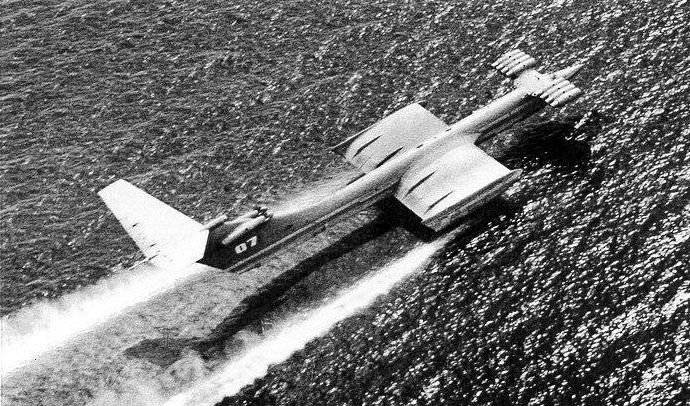
However, this has already been mentioned many times, a critical flaw is inherent in the principle of an ekranoplan: to create an “air cushion”, the flight height is less than the aerodynamic chord of the wing of the aircraft (in other words, less than the wing width). just a few meters away. Normal atmospheric pressure at sea level 760 mmHg. column, at a height of 10 000 meters, it is reduced to 200 mm. Hg the pillar is the whole answer: a fast-moving airplane flies in discharged layers of the atmosphere, and an ekranoplan hung with a dozen engines, howling and crashing through the densest air near the Earth's surface, while constantly lacking traction.
But in general, the idea seemed interesting - in the 90-ies of the TsKB im. R.E. Alekseeva was visited by an American delegation led by aircraft designer Burt Rutan, a renowned expert in the field of non-traditional aircraft circuits. The result was not long in coming: in 2002, Boeing experts announced a project for the Pelican-ULTRA super heavyweight military transport airplane.
Seventeen "Abrams" for one flight
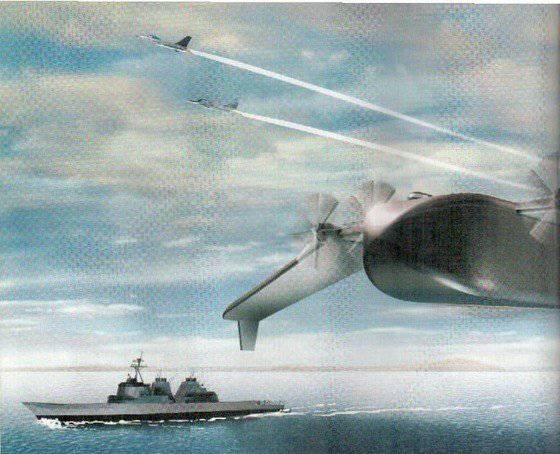
When discussing the Pelican project, the most common opinion is the unique capabilities of such machines during landing operations. WIG can take on board up to 17 main combat tanks M1 "Abrams" and deliver armored vehicles to anywhere in the world at a speed of 250 knots (460 km / h) - tell me, which of the modern ships can provide such incredible performance? The flight range of 16 - 18 thousand kilometers, coupled with the lack of need for airfields (under the wing of an ekranoplane there is always an endless runway of sea water, right?) And the ability to quickly unload on an unequipped coast - all this gives an advantage in deployment speed and tactical surprise, expanding the sector to the limit possible landing.
... The salty sea without an edge without a bottom! But the shore will glimpse us in the distance, the naval assault ships are coming! - difficult to detect with ekranoplans * whirl around the enemy shore, behind the stern the sea is boiling from shells, but late - the riddled cars, raising clouds of wet sand and pebbles, crash down onto the coast with a crash, a steel avalanche of armored vehicles and black jackets lash out from their depths.
A tank is not only the best remedy for traffic jams, armored vehicles are the main force in land battles. Unfortunately, tanks are becoming formidable. weaponsIt is only when they feel solid ground under the caterpillars - in the open sea they are only a pile of iron with negative buoyancy, which should be unloaded as soon as possible to the shore.
And so, on the beach, the remains of ekranoplans are burning down, but now it no longer matters - the tanks were successfully delivered to the bridgehead.
* Suppose that we are dealing with Papuans who do not have DRLO aircraft
I will disappoint the reader. History About dashing landing on the enemy coast - just a figment of imagination. The Pelican was never planned to be used as an amphibious vehicle and could not be in principle. This is a pure transport vehicle. You may be surprised, but the American “super-ekranoplan” could not even land on the water surface! The landing system of 38 pairs of wheels finally convinces us that a well-equipped aerodrome with a long runway was needed to base the Pelican, because Such a chassis design makes it impossible to quickly break off and climb - the Pelican had to smoothly take off and land on a very gentle glide path, like some B-52 bomber.
Passion on the project "Pelican"
Americans knew about the main contradiction in creating an airplane: all the benefits achieved by increasing the lift force are spent on overcoming the monstrous air resistance at low altitude. However, the engineers of Boeing hoped that by correcting some, in their opinion, errors in the design of Soviet ekranoplans, and using the most modern technologies, they would be able to create an efficient vehicle - the additional lift from the air screen would exceed all negative factors.
Of course, the Americans didn’t have any special illusions - it was already clear from the outset that, given that minimal benefit, the ground effect vehicle would have an advantage over the plane only on ultra-long routes (more than 11 thousand kilometers). Running a little ahead, I will say that even this was not achieved.
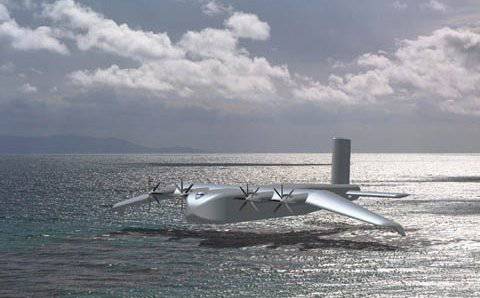
First of all, the engineers of the Boeing completely abandoned the sea-based - given the size of the Pelican, an attempt to take off from the surface of the water turned into insanity. Try to accelerate a real ship with a draft of several meters up to the speed of 150 knots (the Pelican’s full displacement exceeded the “Watching Corvette" displacement!) - what should be the required power of the power plant to overcome the enormous resistance of water, waves and the force of water "sticking" to the hull ?!
The best project was recognized as the "ground" ground-wing vehicle, taking off only from airfields. In addition to reducing the required power of the engines, this allowed engineers to bypass many of the design difficulties associated with the maintenance of marine operations. The construction of the machine was facilitated, in order to save weight, the cargo compartment was made unsealed.
And then began a major problem. First of all - what power plant is able to move from the place of this monster? Max. the Pelican's take-off weight is 4,5 times as large as that of the largest aircraft in the history of the An-225 Mriya (2700 versus 640 tons). Antonov needed a 6 jet engine ... would it really need an 24?
Boeing engineers planned to install eight incredible turboprop engines based on the LM6000 gas turbine unit with an 30-40 thousand hp capacity on the Pelikan. each! Placed in pairs in four fairing nacelles, they rotated 4 pairs of cyclopean propellers with a diameter of 15 meters. Any investor would probably be wary of hearing such numbers - it’s enough to estimate the cost and laboriousness of servicing a propeller, the size of a five-story house.
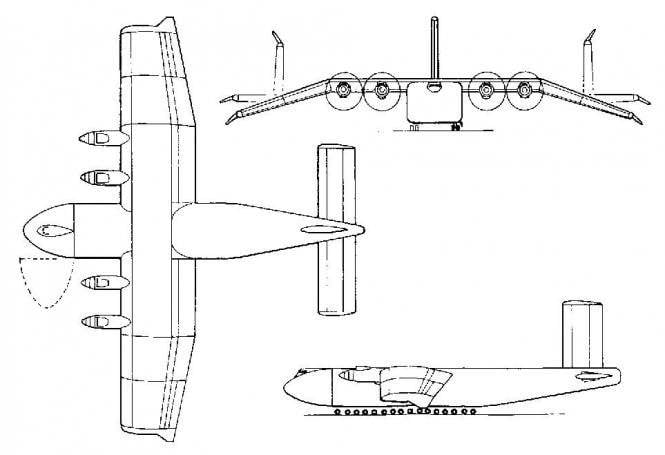
As the project worked out, other shortcomings surfaced - it turned out that there were no airfields suitable for home “miracle” with a wingspan of 190 meters. We had to install a wing folding mechanism - the dimensions were reduced to 120 m. For comparison: the wing span of the huge B-52 bomber is 53 m, well, the world record holder in aviation is the An-225 "Antonova" as much as 88 m!
Those. it was clear to any more or less literate person that the Pelican project is a dead number. After the publication of the first characteristics of the miracle ship, the management of Boeing in 2003 dispersed the “initiative group” of WIG fans, and the research division of Boeing Phantom Works switched to developing the concept of the sixth generation fighter. It should be noted that Phantom Works engineers were always entrusted with the most “inadequate” projects, since this department was not engaged in the construction of real aircraft; This is just a scientific unit focused on finding promising technical solutions for the aerospace industry.
Well, the American creators of WIG, like their Soviet counterparts, came to a logical final. Mother Nature can not be deceived.
Sea cruises
How now the poor American marines will fight without WIG? Yes, as usual - for the delivery of expeditionary forces to foreign shores are used transport command shipping.
Here, for example, a series of high-speed military vehicles such as "Algol": 55 000 tons of total displacement, max. node 33 speed (60 km / h). Hooray! - WIG supporters will be delighted, - the ship is 8 times slower than that of an WIG! True, but at the same time, the Algol load capacity is more than 25 times. The cost of the operating costs of a ship and a ground-wing vehicle is not at all comparable - sea transport has at all times been the cheapest means of delivery.
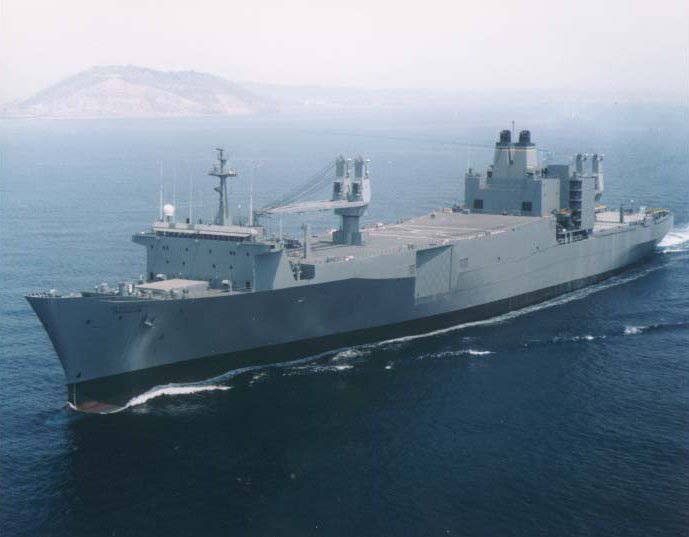
During the transfer of troops to the Persian Gulf, huge transports could take on the Abrams 183 tank, 46 trailers with 20-foot containers, 1 million liters of drinking water and several million liters of fuel and lubricants. It is simply insulting to compare an ekranoplan with “Algol”.
By the way, Algol military transports are by no means ultramodern ships - their age has long exceeded 40 years. Just an old Dutch container ship that underwent a deep modernization in the 80s. The shipping team often uses this technique - for example, in the early 2000s the high-speed transport Lance Corporal Roy Vit, the former gas turbine ship of the Black Sea, came into operation fleet type "Captain Smirnov."
But lovers of WIG hardly convince these simple truths ...
When there are no other excuses, the last argument is used: an ekranoplan can be useful in extreme situations - the cruising speed of an ekranoplan is 8 times higher than that of the fastest military vehicles. So what? In a transport plane, the speed is higher by 15 times, while the cost of the flight is lower. The conclusion is obvious.
Very often the opinion sounds: “Ekranoplan is not a ship or a plane, therefore they cannot be compared.” You can compare and even need. The ekranoplan tries to duplicate the tasks of naval and aviation equipment and, it must be admitted, it turns out badly for him.
Critics of the construction of "half-ships and half-planes" are often accused of negative rhetoric and the absence of any constructive proposals. This is not true: every time I call on WIG fans to name at least one distinct advantage of this type of technology and the possible scope of its application.
Ekranoplans can not be used as vehicles: where speed is required, aviation is working, and for the delivery of large consignments, sea transport is better managed. However, you should not discount aviation's carrying capacity - heavy transport aircraft An-124 Ruslan, C-5 Galaxy and C-17 Glomaster easily lift the 1-2 main battle tanks and, if necessary, are able to deliver the grouping in a short time from 50-100 tanks to any corner of the world.
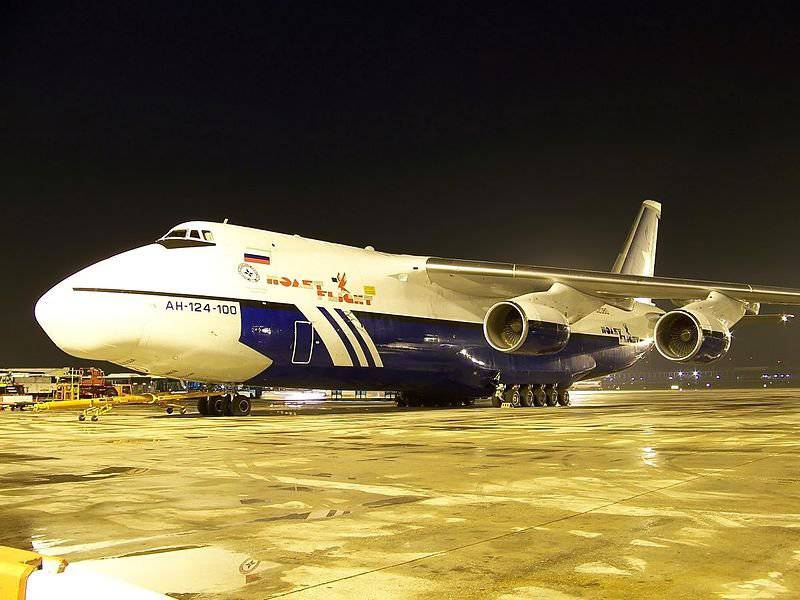
The combat use of WIG raises more questions than answers. The ekranoplan is bad in the role of a rocket carrier - it is several times inferior to a combat aircraft in speed and maneuverability, and, unlike a ship, it does not have any defensive means (it’s impossible to install them - the ekranoplan will simply not be able to take off). In such conditions, the speed of 400-500 km / h does not really matter anymore - enemy aircraft will quickly detect and sink a slow-moving unarmed target.
The amphibious capabilities of an airplane are clearly visible on the example of the Pelikan and Orlyonok projects. The first carried a lot of tanks, but could not land on an unequipped coast. The second was unpretentious when choosing seats, but could not even lift one tank.
The most meaningless proposal - the sea wig "Rescuer". Flying at a height of several meters at high speed, he sees nothing further than his nose. "Rescuer" simply will not find those in distress.
By the way, an interesting fact: the Eaglet "Orlyonok" and the old An-12 transport aircraft had an equal payload (20 tons). The transport aircraft surpassed the Orlyonka in cruising speed (350 versus 650 km / h) and flight range (1500 km versus 4500 km). At the same time, 12 thousand liters of kerosene splashed in An-18 fuel tanks, and 28 thousand liters were poured into EK tanks!
Well, who needs such an unprofitable vehicle?
Information